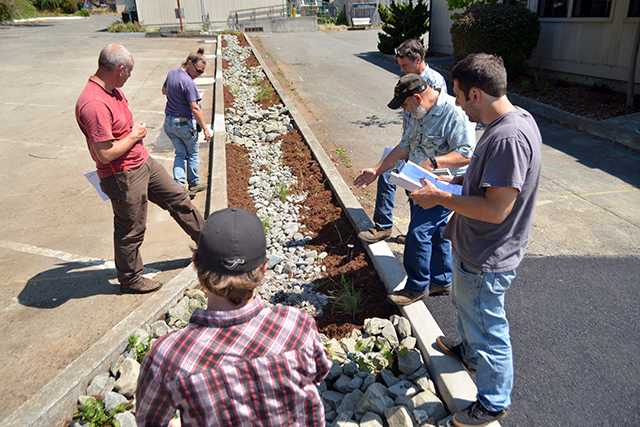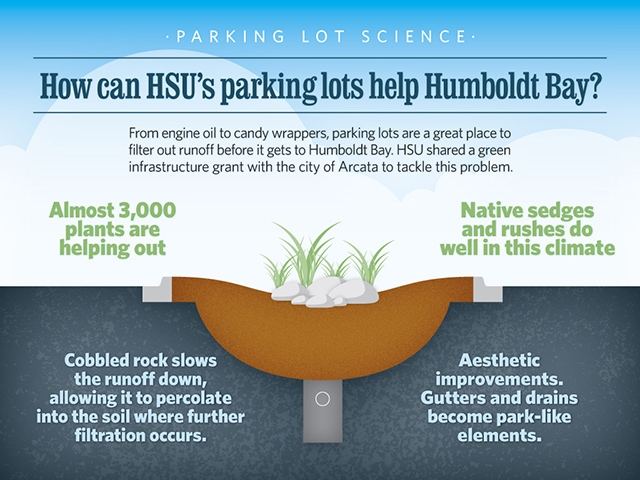Included in the project are three parking lots on campus that have been fitted with a natural water filtration system using Low Impact Development (LID) design standards
When the City of Arcata called with a partnership proposal geared toward best use of the grant from the Regional Water Quality Board, parking lot LID projects leaped up the list of campus improvements, says Traci Ferdolage, Associate Vice President for Facilities Management.

“When funds become available like this, it makes sense to go for it,” Ferdolage says. “We’re obviously proud of our commitment to sustainability at HSU, so when the City of Arcata asked about collaborating on the grant we made it a high priority.”
Installed during the summer, the improvements. are designed for function and aesthetics. Planter-like strips bordering parking lots serve as channels for the runoff that briefly collects or is absorbed before finding a drain.
On its way through the system, water is filtered by a combination of soil, rocks, and plants. Soil specifically selected for its porous composition slows the water’s absorption, enhancing the plants’ ability to soak it up.
Under the direction of Environmental Resources Engineering Professor Andrea Achilli, 35 students in the Water Quality and Environmental Health classes analyzed the runoff’s composition during the spring of 2013 and fall of 2014. Other students from this academic year’s classes will conduct the same procedures for comparison.
“We looked at water quality parameters that include dissolved oxygen, temperature, pH, turbidity and solids content,” Achilli says. “We also measured salinity, biological oxygen demand, nutrients, and some metals. We are looking forward to assessing post-implementation water to see if the quality of the runoff improves.”
More than 3,000 plants are doing the work on campus, most from the rush and sedge families. Many are still plugs, a combination of seedling and soil the size of a thumb, but when fully mature they’ll also add beauty to the already attractive HSU landscape, Ferdolage says.
“The selected plants are among the most effective at absorbing pollutants,” Ferdolage says. “You’ll see the added value of these particular varieties as they grow to full maturity.”
After running the filtration gambit, the remaining runoff finds a storm drain that connects to the city’s stormwater drainage system. Stripped of contaminants, it eventually makes its way to Humboldt Bay.
Also monitored will be plant density to make sure the water keeps flowing. “If we think there’s are more than enough plants, we’ll pull some aside and keep them in our little nursery to be used in other areas of campus,” Ferdolage says.
